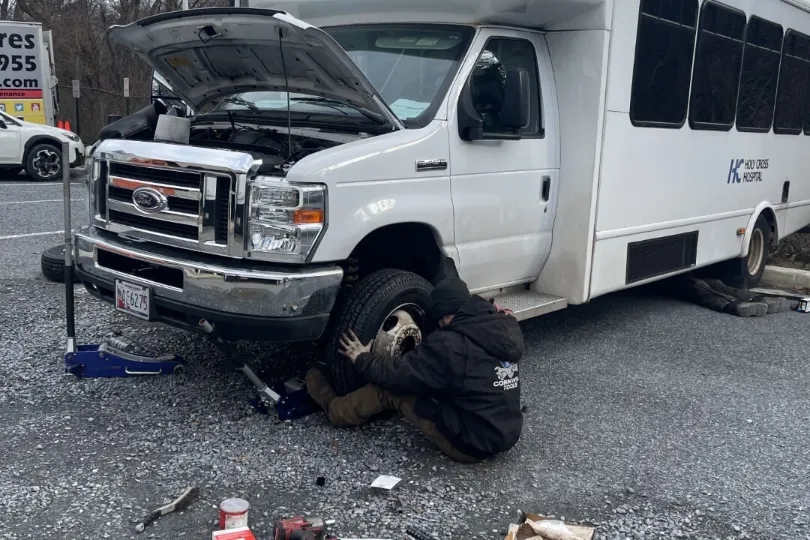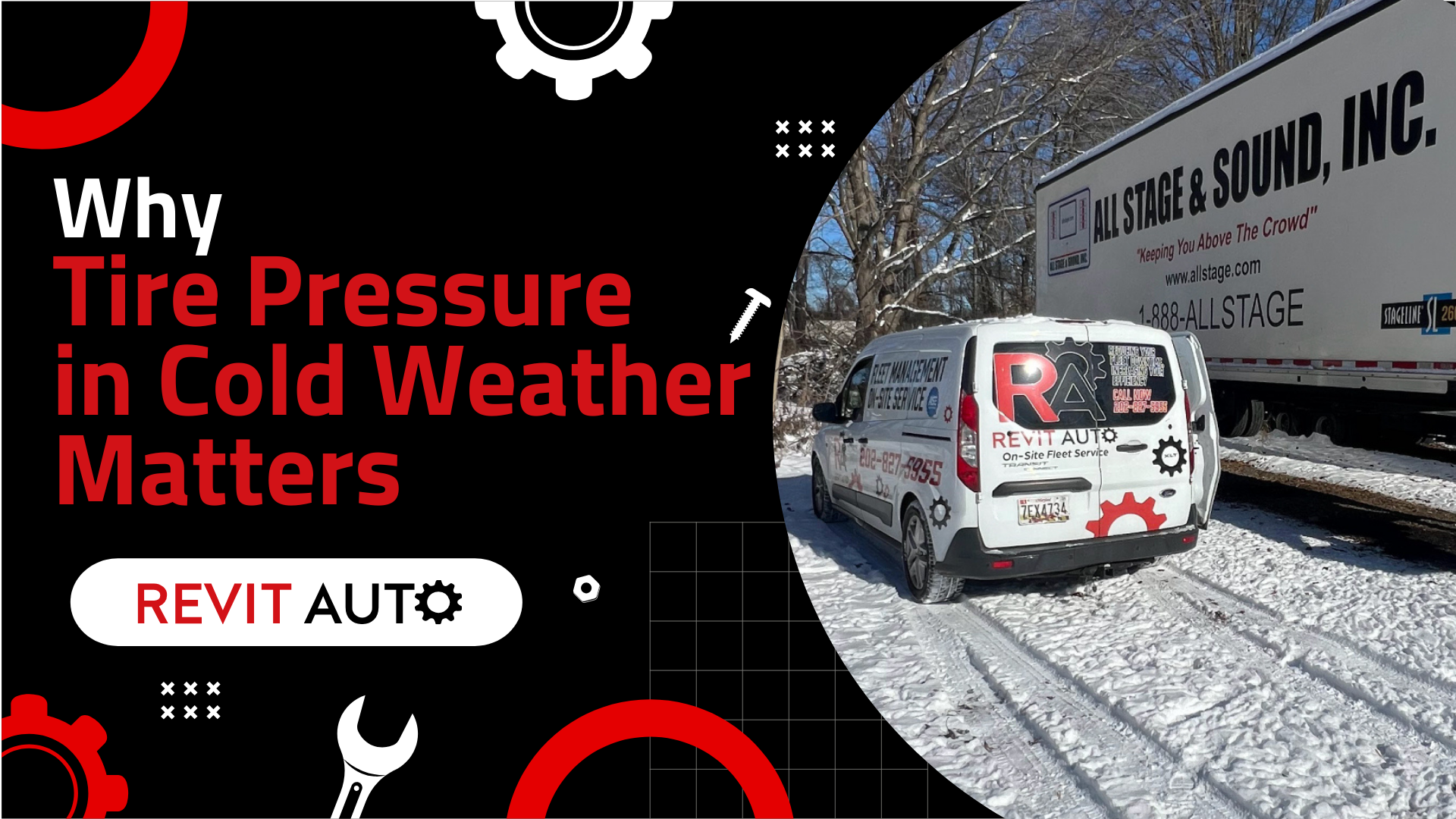As the temperature drops and snow blankets the roads, keeping your tires in top shape becomes even more critical. While most drivers know the importance of having good tread, they often overlook a key component: tire pressure in cold weather. On cold, snowy days, you might notice your tire pressure monitoring system (TPMS) light turn on. This isn’t just a coincidence—it’s science.
The Science Behind Tire Pressure in Cold Weather
For every 10°F drop in temperature, your tires can lose 1–2 PSI of pressure. This is why it’s common for your TPMS light to illuminate on freezing mornings. To ensure your tires are at the correct pressure, locate the tire pressure sticker on your vehicle. This is typically found on the driver’s side door or inside the door panel near the B-pillar.For example, on the vehicle used in this demonstration, the recommended tire pressure is 40 PSI for both the front and rear tires. Ensuring your tires meet these specifications is essential for safety and performance.
The Dangers of Driving on Underinflated Tires
Many people mistakenly believe they can drive safely on underinflated tires, but this can lead to serious consequences:
- Compromised Safety: Tire pressure contributes to the structural rigidity of the tire. Without enough air, the sidewall flexes excessively, leading to instability and the risk of a blowout.
- Reduced Fuel Efficiency: Underinflated tires create additional rolling resistance, making your vehicle work harder and burn more fuel.
- Premature Tire Wear: Improper pressure causes uneven wear, shortening the lifespan of your tires and costing you more in replacements.
- Difficult Handling: Underinflated tires can cause the wheel to move unpredictably, affecting the overall drivability of your vehicle.
How Tire Pressure Affects Your Vehicle
When properly inflated, your tires and wheels work in unison, providing stability and optimal performance. If the pressure is too low, the tire loses its ability to support the vehicle correctly, which can lead to dangerous sidewall flexing and eventual tire failure.In the demonstration, a tire was deflated to illustrate the effects. With low pressure, the tire showed excessive movement on the wheel, creating instability and increasing the likelihood of an accident.

How to Check and Inflate Your Tires
To maintain safe driving conditions during winter months in Maryland and the DMV area, regularly check and inflate your tires. Here’s a quick guide:
- Locate Your Valve Stem: This is where you’ll attach your inflator or pressure gauge. If your valve stem cap is missing, replace it as soon as possible to prevent dirt and debris from entering and damaging the Schrader valve.
- Use a Reliable Tire Inflator: In the demonstration, a Milwaukee tire inflator was used to bring the tire up to 40 PSI. Simply connect the inflator to the valve stem and monitor the pressure as it increases.
- Be Mindful of Contaminants: Without a valve stem cap, road grime and salt can enter the valve stem and interfere with its ability to seal properly. Always ensure your valve stems are clean and capped.
- Reinstall the Schrader Valve: If you’ve manually deflated your tire for any reason, ensure the Schrader valve is securely reinstalled to prevent air leaks.
Key Takeaways
- Always check your tire pressure in cold weather and adjust it to the manufacturer’s recommendations.
- Driving on underinflated tires can lead to safety risks, reduced fuel economy, and costly repairs.
- Invest in a reliable tire inflator and maintain clean, capped valve stems to keep your tires in optimal condition.
By staying proactive about your tire pressure, you can ensure safer, more efficient driving—no matter how cold or snowy the weather gets.

